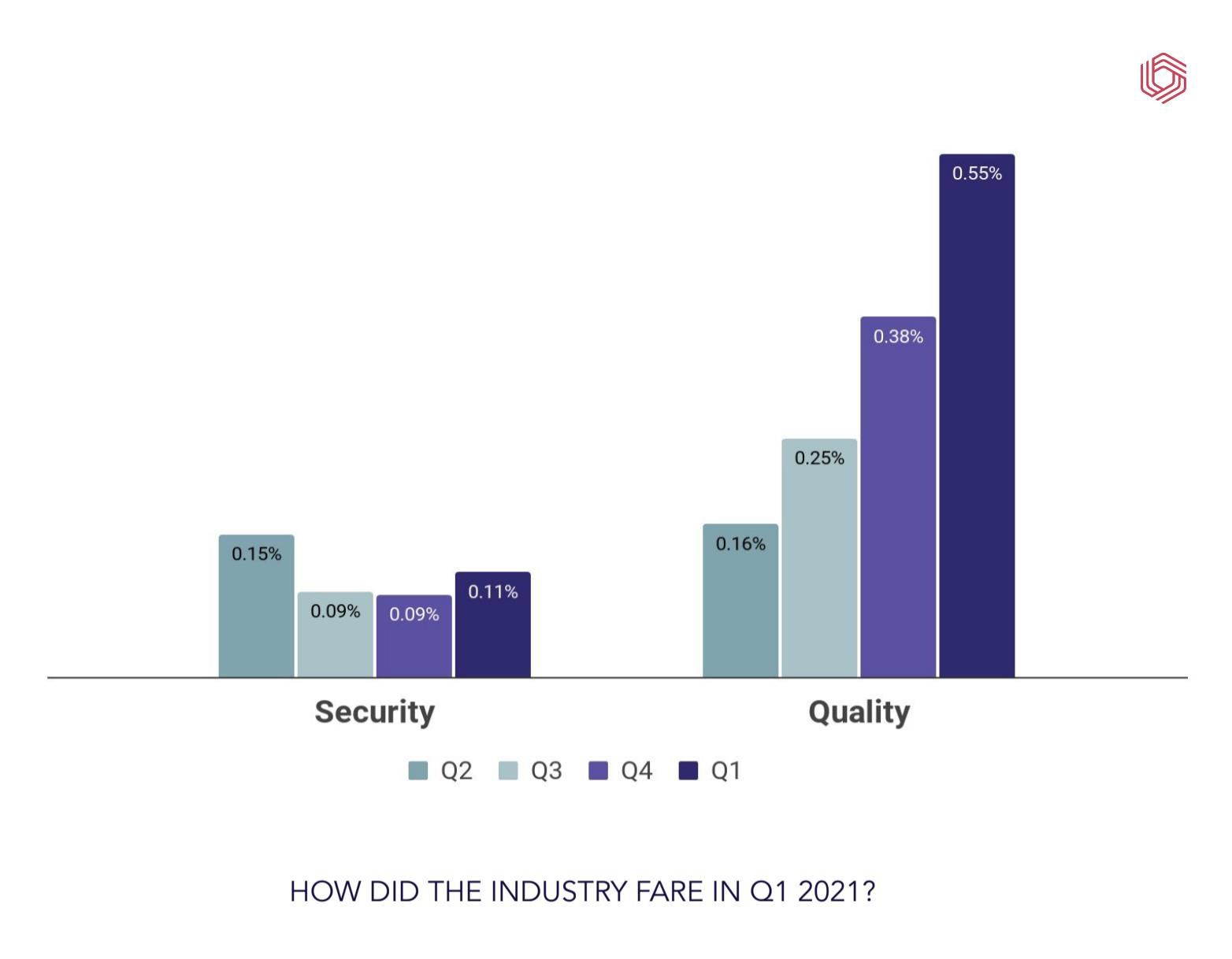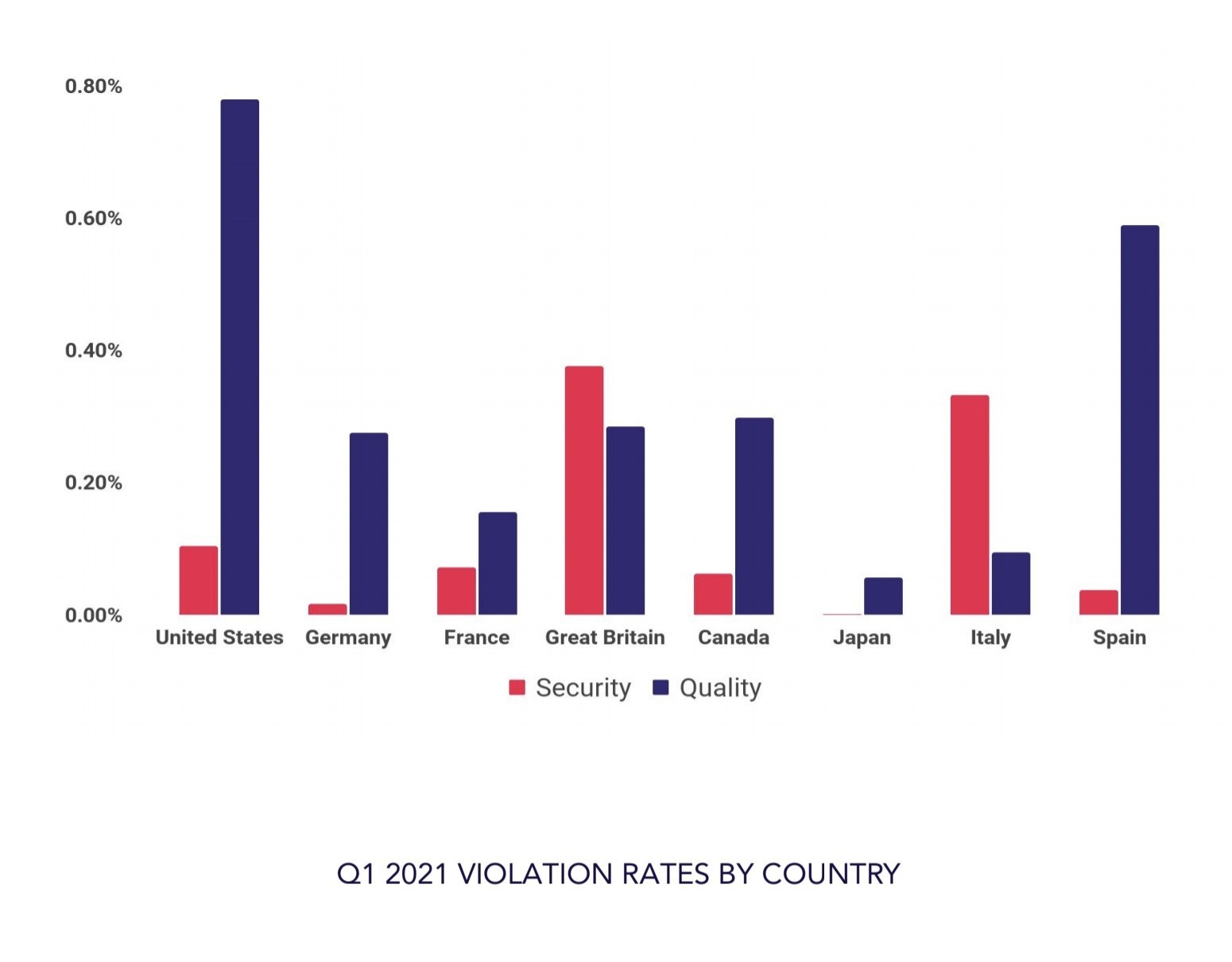Digital Advertising Trends Disrupted by Increasing Security And Quality Violation
According to the latest report on digital advertising trends, online advertising is no longer safe and secured from malvertising and fraud. One in every 150 impressions is either deemed dangerous to the user or rated disrupted. The rates of security violations have spiked by over 26.5% in Q4 2020, even as quality violations increased 45%. What’s most astonishing in this report is the lack of trust in pharma and healthcare-related ads. Pharma is the most blocked ad category, closely followed by Health & Medical!
Confiant released its Malvertising & Ad Quality Index (MAQ) for Q1 2021 to investigate the state of digital advertising trends and how these are influenced by quality and security in the industry at large.
At the time of this announcement, Louis-David Mangin, CEO and Co-Founder of Confiant Inc. said –
“Our Q1 MAQ Index reveals much concerning data for the AdTech industry. Malvertisers remain exceptionally stealthy and nimble in their capability to permeate the industry. The situation underscores the importance of platforms adopting protocols to know their customers and reduce the prevalence of bad actors accessing the programmatic advertising ecosystem.”
Quality Violations Arise Due to Heavy Ads and Video Arbitrage
Confiant observed that one in every 150 impressions was dangerous or highly disruptive. The overall industry security violation rate increased 26.5% over Q4 2020, hitting the highest increase level since Q2 2020. Quality violations (driven in large part by increased heavy ads and video arbitrage) increased 45 percent over the Q4 2020 data, escalating for the third quarter in a row.
What are Quality violations?
Quality violations include:
- heavy ads (those that consume an inordinate amount of system resources, slowing website speed),
- misleading claims,
- video arbitrage (previously called in-banner video) with undesired audio or video and expansions, and so on.
What are Security violations?
Security violations are attempts to compromise the user through:
- malicious code,
- trickery,
- forceful redirects,
- scams,
- fake software updates,
- fake ad servers, and
- High-Risk Ad Platforms (HRAPS).
HRAPS are ad platforms that consistently serve abnormal levels of malicious ads and are the preferred vector for malicious actors. Such malicious and disruptive elements delivered via digital advertising pose substantive risks to security and privacy, degrading the user experience and threatening platform revenue and reputations by elevating the adoption of ad blockers.

In Q4 2020, Tides Reversed for the US markets Fairly Poorly Compared to the European Markets
European markets have historically higher rates of security violations than the U.S., but in Q1 2021, the gap closed somewhat.

While the UK and Italy experienced violation rates well above that of the U.S., Germany, France, and Spain experienced a lower incidence of security violations in Q1 2021.
Quality violations remained more prevalent in the U.S. than elsewhere during this period, a trend that has held through past reports. Further, advertisers tend to favor certain browsers over others: Edge for Windows had a violation rate 76 percent higher than Google Chrome in Q1 2021.
COVID-19 Messaging and Its Relation to Ad Blocking
Analysis of the blocking of malicious and disruptive ads by category revealed somewhat unsurprisingly that pharmaceutical and drug products were the most frequently blocked, with health-related topics representing nearly one-third of all category blocks – the likely result of sensitivities related to COVID-19 messaging.
The first quarter of 2021 saw political advertising blocks cut in half from 12 percent in Q4 2020 to a mere six percent following the 2020 U.S. presidential election.
Analysis of Top 100 Supply Side Platforms
The MAQ Index also analyzed the performance of over 100 SSPs.
More than 75 percent of impressions originated from just 12 SSPs commonly used by all publishers. Only one SSP had better than average performance in both security and quality, with the rest either performing poorly in one area and well in the other or poorly in both. The SSP with the highest security violation rate was a staggering 213 times that of the best-performing SSP.
When under attack, no SSPs contained incidents in one day or less and some remained at elevated risk for as long as 84 days following an attack. Major threat groups DCC Boost, Yosec and Zirconium were all analyzed in detail in the report, which concluded that malicious clickbait has emerged as the favored means of attack over forced redirects.
SSPs Continue to Struggle to Meet Publisher’s Expectations
SSPs continue to struggle to meet publisher’s expectations, with one in every 30 impressions flagged by Confiant as representing a missed brand or category exclusion.
The Q1 2021 report analyzed more than 180 billion impressions from January 1 to March 31, 2021 across 29,000 premium websites and apps, using the Confiant real-time creative verification solution to measure ad security and quality across the programmatic advertising ecosphere. Confiant first introduced this quarterly report, originally known as the Demand Quality Report, in September 2018, as the industry’s first benchmark report. The Q1 2021 MAQ Index is the twelfth report in the series.
The report’s violation rate was calculated by dividing the number of impressions exhibiting a particular issue by the total number of impressions monitored by Confiant.

Comments are closed.